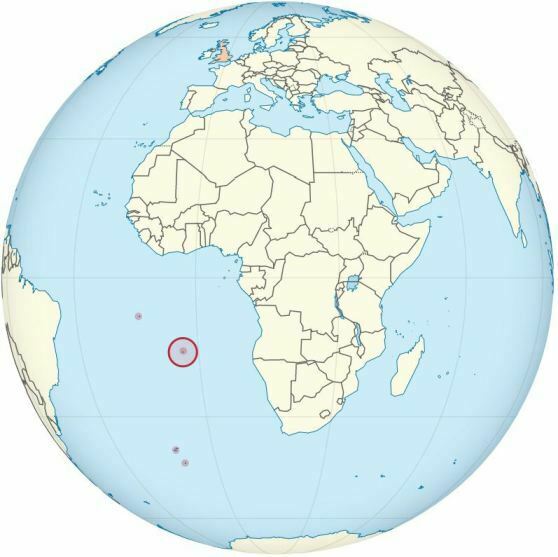
I met many people during my two weeks on St Helena, but two encounters have stuck with me in particular. The first was with a Saint (as the locals are called), a successful businessman who had been all around the globe and had just returned to the island. He was super-confident about St Helena, its values and its place in the world. He was scathing of outsiders who had come with short-term solutions aimed at resolving the island’s problems, people who neglected to consult the locals on what would really work for them, then left those locals having to clear up the mess afterwards. He suggested that the British government was solving some of its own problems by sending its unemployed to fill administrative posts on the island – possibly a little too imaginative an accusation, but all part of a view that saw St Helena’s best answer as being St Helenians.
The other encounter was with an amiable young man from the poorer end of Jamestown, who invited me into his house (typical St Helenian sociability), played some reggae on a keyboard at a volume loud enough to entertain a wide circle of neighbours, then spoke of his frustrations of living on the island. Pay was so low (the average wage is a little over £7,000), and like many others he just wanted to experience more of the world, being particularly keen to get to Washington and see if the US president was for real. He had worked for a while on Ascension Island – as many Saints do – but here he was, trapped again. “St Helena is a prison”, he told me.
St Helena knows best; St Helena is a prison. Somewhere between those two lurks the truth.

St Helena is a marvellous, intoxicating, paradoxical place to visit, and I would urge anyone with a mind for imaginative travel to go there – you will be richly rewarded. It has more variety and more concentrated beauty per square mile than almost anywhere else that I know. The climate is benevolent, the sub-tropical location being tempered by trade winds from the south-east, while regular rain keeps the lush parts lush. The people are welcoming, unfailingly helpful and obliging. Although not absolutely crime free (the island does have a prison) it must be one of the safest places on the planet.
It is also a fascinating puzzle. The great temptation for anyone visiting the island is to try and solve it on a short acquaintance. Specifically there have been many attempts to tackle its economic woes, to make the most inconvenient of locations self-sufficient somehow. The list of failed ideas imposed on the place by well-intentioned experts down the years have included silkworms, chinchona (for quinine production), fish canning, and harvesting flax.
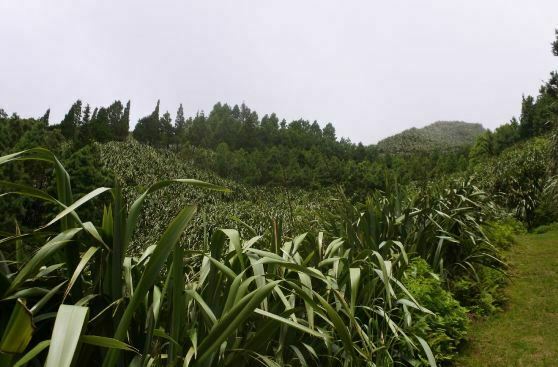
If you visit the island you will see the residue of some of these failed ideas, particularly the large stretches of untended flax. You will also see the most recent efforts to change the island’s fortunes. Of these the most prominent is, of course, the airport. Until 2016 the only way to get to the island was by boat, which meant a five-day journey out of Capetown on the RMS St Helena. It is no wonder that tourism struggled to get established on the island, when only the retired were likely to be able to devote two weeks simply getting to and from the place. In 2014 just 736 tourists visited St Helena, plus another 3,355 people briefly touching down from passing cruise ships.
The airport was built to change the island’s economy, chiefly through tourism. St Helena has few sources of income – tourism, some fishing, stamps. It imports around £10m of goods but exports less than £1m. It is supported by an annual subsidy of around £30m and the British government wants to reduce the bill. So it was that, after decades of pleading, an airport was built, at the estimated cost of £285m. There were wild hopes that the island could attract 35,000 tourists per year.
Hacked out of the unforgiving rock of Prosperous Bay on the eastern side of the island, the airport is an engineering marvel. However, it made St Helena an international news story for all the wrong reasons, when it was discovered that large aircraft could not land there owing to severe windshear. The British media had a field day, labelling it ‘the world’s most useless airport’. They mocked the Conservative government for having failed to investigate the issues properly, and humiliated the islanders in the process. However smaller aircraft could land there, and St Helena pressed on with its plans. A regular air service was agreed with South African airline Air Link, and as of October 2017 weekly flights (Saturdays) from Johannesburg were scheduled (when I visited flights from Capetown that linked up at Windhoek in Namibia had been halted owing to a dispute between air carriers).
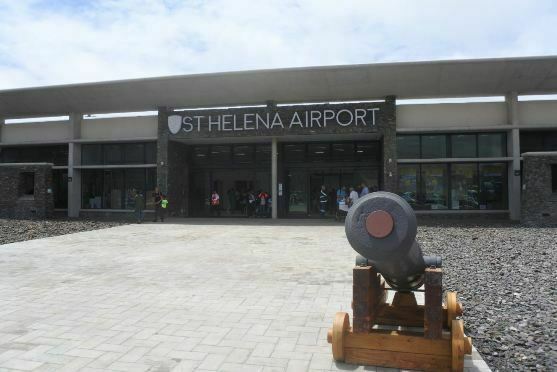
The flight from Johannesburg takes six hours; the return flight takes four hours. That’s because they take extra fuel on the flight out in case a landing is impossible and the plane has to return to the mainland. Many tales now circulate of the turbulent arrival and takeoff that may occur, but when I travelled both were as smooth as you could hope for. The airport is 1,000 feet above sea level, perched on a rocky outcrop overlooking the sea, amid St Helena’s bleakest landscape. You feel as though you have landed on the Moon. Then you drive into the centre and enchantment takes over.
Whether the airport alone will be the island’s saviour is unclear. A good half of the people that flew with me on the 70-seat plane were locals, and though the number of tourists travelling this way (chiefly South African, I sense) is increasing, simple maths will tell you that this is not going to make a huge difference on its own. Maybe this is why mooted plans for a eco-golf course with luxury hotel and other such fantasies have yet to become anything (and one rather hopes that they never will).

But there is other commercial activity which could actually be a sign of joined-up thinking that will work to the island’s advantage. There is rebuilding going on in Rupert’s Bay, adjacent to Jamestown, where a new wharf is being built to enable large cargo ships to come alongside. It is no beauty spot, but has a pragmatic appearance, linking up by a new road to the airport.
The game-changer, though, will be what is planned for beneath the sea. Internet communication on St Helena is currently a trial. Delivered via a satellite, managed by telecomms company Sure South Atlantic (which also provides mobile phone coverage), it is expensive, slow and unreliable. While the rest of the world contemplates moving from 4G to 5G, St Helena is in the age of dial-up (the speed is 50 megabits per second for the entire island). But a new transatlantic fibre optic cable is being laid, which was going to bypass the island, but at the cost of some 21.5m Euros a 50-km offshoot is said to be going to St Helena in 2019, thanks to some promised EU funding (how curious that one of the last pieces of EU largesse going the UK’s way might be to help a South Atlantic island).
What St Helena needs is to be connected. It’s not just about being able to get Netflix at last, but the collapsing of distance, and with it difference. St Helena is a curious mixture of the resigned and the inventive. Resigned, because it has been let down so many times that it does not seem to be trying in some areas as much as it could (like growing enough fresh vegetables and fruit of its own – after two weeks on the island I could have given my life savings just to be able to eat a tomato – though there are environmental reasons why this is difficult). Inventive, because it is also the most creative and self-reliant of places, where seemingly everyone can do a bit of everything, from house-building to maintaining cars. There is a strong spirit of enterprise which is certain to flourish once it can start to build up connections and services for the outside world.

It is already a hugely communicative place. There are numerous active and engaging websites and/or social media feeds: St Helena Island Info, What the Saints Did Next, St Helena in Focus, St Helena News. It has two newspapers (this for a population of 4,500) and three FM radio stations – more than anything, St Helena connects its people through radio, which everyone listens to: the essential conduit for news, information and advice (one of the radio providers, South Atlantic Media Services, also produces one of the newspapers, The Sentinel).
St Helena wants to be both near and far. There is much nervousness on the island about how increased tourism will change the place, but though there is some new building going on which has a slick look somewhat out of keeping with the rest of the place, not least the airport, I did not sense that there would be great change any time soon. St Helena hasn’t changed its ways to accommodate the newcomers. The buses are few and puzzlingly scheduled for the outsider, the shops are closed when you might expect them to be open, there are no ATMs, there no tomatoes. You have to adjust to their ways, and long may that be so.
More than that, it is always going to be difficult to get there. It is 1,200 miles out to sea (from Africa). The journey is costly and challenging. And because this is so, St Helena is likely to retain its character, even while it may change its mood. The tone of fatalism that seems to have characterised the island in past decades is likely to diminish – indeed I sensed it in the short time that I was there – even if St Helena’s young will still prefer to leave the island to seek out better fortunes elsewhere. But the bedrock of its character lies in its geographical uniqueness: an island that ought not be there because it makes no sense for humans to be inhabiting it, yet they do. When you join them it is quite easy to be persuaded that there is no better place for a human to have chosen to stay, when all is said and done. It will always be somewhere to dream about, the impossible place that just about exists as possible, but can equally become the place where distance does not matter at all. All it requires is 50 kilometres of cable.
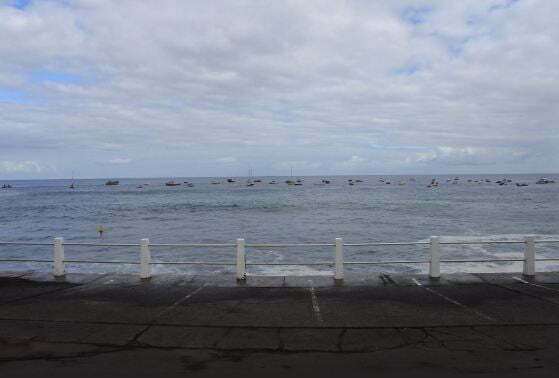
Why did I go to St Helena? I went there because, many years ago, I read an article in a magazine which told of this far away, neglected island. It might have been paradise except that the people there were sad, because they had been overlooked and poorly governed. Once an essential stopping post for Atlantic shipping, it had become an irrelevance with the arrival of steamships and the Suez canal. It lost its purpose at some point in the nineteenth century and was still trying to find it. But maybe that was to be asking the wrong question, because the sense of loss was what defined it.
I knew that going to the island would not be the same as reading about it from afar. Being there, reality would trump fantasy. And so it proved. I sat on the waterfront at Jamestown, looking out across the Atlantic Ocean and tried to contemplate just how isolated I now was. I couldn’t do it. I couldn’t imagine myself as being so far away from anywhere. The actuality of being somewhere supplanted being at such a great remove from everywhere else.
This of course is the reality of living on a place such as St Helena. It is far away if you are far away, and very much your world if you are not. Geography is relative.
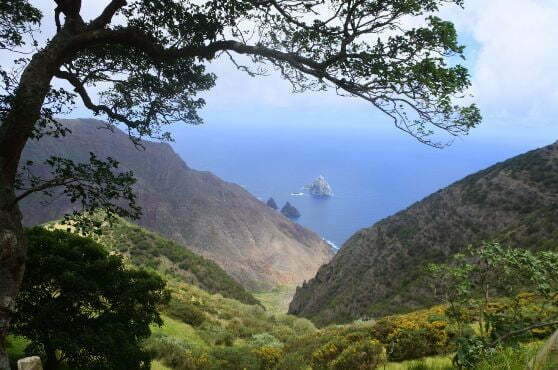
Now that I am far away from St Helena once more, I find that the place has changed in my mind again. It has become a curious memory. It was something that I wanted to see, perhaps because I never expected to be able to do so. It was always going to be that somewhere else. And even if I ever got there, by doing so I would somehow have destroyed that which was its attraction, which may have been its impossibility.
But on visiting the island its attraction was not destroyed, because I expected things to be different once I got there, or my perception of them to be different. The place was enchanting. It was beautiful to behold and intoxicating to discover. A little rough at the edges sometimes, but I admired the honesty of that too. It both matched and changed my expectations. Beyond its enchantments, the place had this unique quality. It came out of the isolation, the sense of history combined with what is a diminishing sense of loss, the independence of spirit, the narrowness or particularity of the culture. It was the quintessential island.

Perhaps the key to understanding St Helena is a paradox: the man-made paradise. Undiscovered until 1502, it was a richly abundant haven providing safe shelter to no one. Man arrived and quite quickly destroyed the landscape and much of the endemic fauna and flora. Forests disappeared. Hard rockfaces remained where once the soil was rich and greenery tumbled down. Gradually St Helena has had to be rebuilt, importing plants, animals, building materials, infrastructure and people. All of this rebuilding has been infected by that sense of loss, by a compulsion to recover that which had been wasted, to be true to the island’s promise. Every Saint is a Fernão Lopes, the island’s first inhabitant: both alone and welcoming, journeying away for a time but compelled to return, undoing then repairing paradise.
For myself, as fleeting visitor, I find that St Helena is remote in space again, and time, receding ever backwards. I dine out on its stories. I show people the pictures, and I write these posts that try, obliquely, to pinpoint its qualities. But I do not think they succeed. St Helena has become, once again, too far away to be possible.
Until I return.
This is the sixth and last in a series of blog posts on St Helena, following my visit to the island in March 2018
Links:
- All of my posts on St Helena, including one from 2016 when I could only imagine that I might one day get there, can be found by using the St Helena tag
- Want to go to St Helena? St Helena Tourism will tell you what you need to know. The essential tourist guide is the Bradt Travel Guide to St Helena, Ascension Island and Tristan da Cunha. The third edition is a little out of date (2015), as the airport had not opened, but it is well researched and eminently practical
- Perhaps the best written account of the island is Julia Blackburn’s travel book The Emperor’s Last Island. It has a mournful tone to it, which may be because she visited at a particular low point in the island’s fortunes (1990)
- There is a detailed and instructive account of the flight from Johannesburg to St Helena on the entertaining site 31B: The World in Economy Class
- Financial reports and other statistics can be found on the St Helena government website. The National Audit Office has a 2016 report ‘Realising the benefits of the St Helena Airport project’ which sets out the aspirations behind its construction
- Matthew Engel’s 2016 article ‘Last Boat to St Helena’, for the Financial Times, is a fine piece of reporting, particularly strong on the many years of political mismanagement
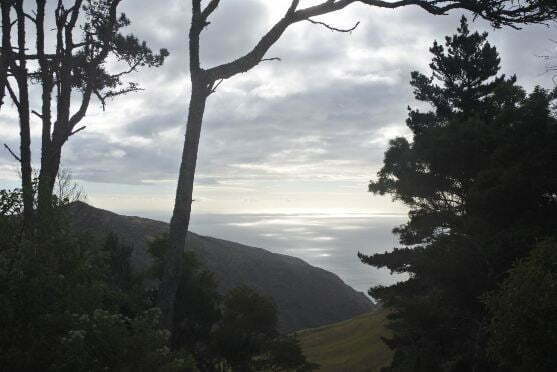
I very much enjoyed all of those posts. Thank you, Luke.
Thank you Stephen. A bit lush at times, like the vegetation, but I had some fun writing them.
It feels like an honest, well researched and thoughtful overview from a visitor’s perspective of our island.
Nothing wrong with a bit of Lush!
Great posts and thoroughly enjoyed, thank you so much. Good to see the gum trees doing so well, I planted one of the first in 2000, wonderful project!
Thanks for your support and suggestions. I love how every child on the island has had a tree planted in their name in the Millennium Forest. I want to contribute to having a tree planted and would like to post a link inviting others to do so, but the St Helena National Trust website is down at the moment.
A wonderful idea Luke, maybe if the NatTrust is down the new Chief Secretary Susan O’Bey could liaise?
I think there would be a lot of interest worldwide in helping to re-grow a forest, if they get the marketing right. At £10 a tree, who wouldn’t want to help?
The St Helena National Trust site is active again, at http://www.trust.org.sh/. The section on the Millennium Forest is here (though there is no donation page or app – you just have to email them to find out more): http://www.trust.org.sh/shnt-conservation-programmes/natural-heritage/millennium-forest/
The undersea cable dream is close to becoming reality. Announced today, 24/12/2019, from the St Helena government – http://connectsthelena.org/news/St-Helena-Government-signs-contract-with-Google-to-land-subsea-cable-34:
More on the Equiano Cable (named after the great abolitionist Olaudah Equiano) is here: https://cloud.google.com/blog/products/infrastructure/introducing-equiano-a-subsea-cable-from-portugal-to-south-africa
The Equiano subsea cable landed on the island on 29 August 2021: https://twitter.com/StHelenaGovt/status/1431931409963311112?s=20
And here’s the video